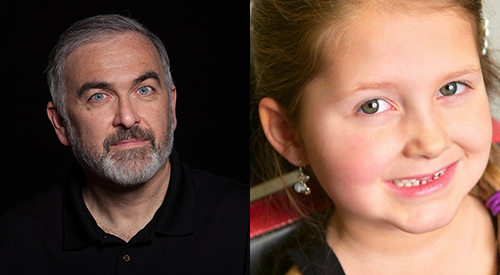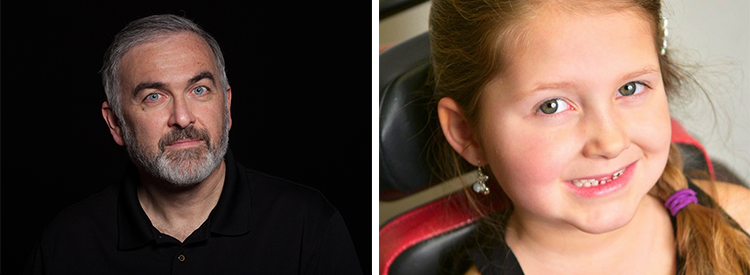Discoverer of Breakthrough Genetic Therapy for Spinal Muscular Atrophy and Young Patient to Meet for First Time at Baylor Lecture


Dr. Adrian Krainer, St. Giles Foundation Professor and Program Chair of Cancer & Molecular Biology at Cold Spring Harbor Laboratory, and Faith Fortenberry, National Ambassador for the Muscular Dystrophy Association.
Contact: Whitney Richter, Director of Marketing and Communications, Office of the Vice Provost for Research, 254-710-7539
Written by: Gary Stokes, Office of the Vice Provost for Research
WACO, Texas (September 18, 2018) – The Baylor Department of Biology's fall 2018 Davidson Lecture promises to be a very special and heartwarming event indeed, as a leading geneticist will, for the first time, be brought face-to-face with a young girl whose life his research has dramatically changed forever.
On September 27, 2018, St. Giles Foundation Professor at Cold Spring Harbor Laboratory Adrian Krainer, Ph.D., will speak on From Bench to Bedside: Spinraza—The First Approved Treatment for Spinal Muscular Atrophy. During the event, he will be introduced to Faith Fortenberry, a young Waco girl who, as an infant, was diagnosed with spinal muscular atrophy (SMA), a neuromuscular disease that is the leading genetic cause of death in infants.
In May 2017, Faith received her first treatment of Spinraza, a drug developed in Krainer's laboratory, and has since experienced continuous dramatic recovery. Once virtually unable to move, she is now able to lift objects, hold a glass, brush her own teeth, and breathe more easily. Faith is currently a National Ambassador for the Muscular Dystrophy Association (MDA), which provided significant funding for the development of Spinraza.
Krainer studies the mechanisms of RNA splicing, the ways in which the splicing process can go awry in disease, and the means by which faulty splicing can be corrected. In SMA, a gene called SMN2 is spliced incorrectly, making it only partially functional. Krainer's researchers found they could stimulate SMN protein production by altering mRNA splicing through the introduction into cells of chemically modified pieces of RNA called antisense oligonucleotides (ASOs). Following extensive work with ASOs in mouse models of SMA, one such molecule—nusinersen (Spinraza)—underwent clinical trials and at the end of 2016 became the first FDA-approved drug to treat SMA by injection into the fluid surrounding the spinal cord.
Dr. Krainer's lecture will take place in the Baylor Sciences Building (BSB), lecture hall B.110. Not only will Dr. Krainer and Faith Fortenberry meet for the first time but the audience will also hear an extraordinary story of scientific discovery and healing. A public reception with hors d'oeuvres will begin at 5:30 p.m. in the BSB Atrium, followed by public remarks, the lecture, and a question/answer session from 6:30 – 8:00 p.m.
Parking and Access to the Baylor Sciences Building: Visitors to Baylor can park in visitor-spaces or in any student or faculty parking that is not marked 24-hour reserved. The Baylor Sciences Building is located near the intersection of University Parks Drive and Bagby Avenue. Parking is available in the lot at the corner of Bagby and Speight Avenue, the lot between the McCrary Music Building and Hooper-Schaefer Fine Arts Center, and in the East Campus Parking Facility. The specific location of the Baylor Sciences Building and these parking lots can be found on the Baylor Campus Map website (https://www.baylor.edu/map/).